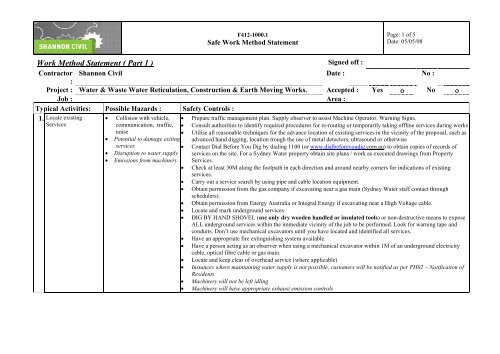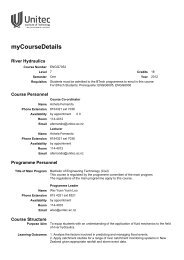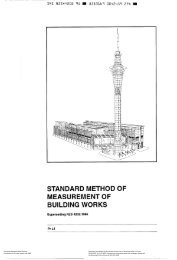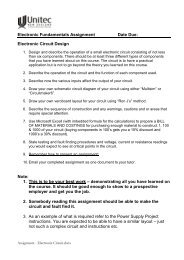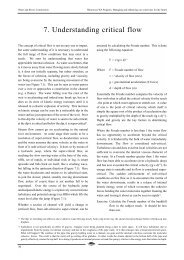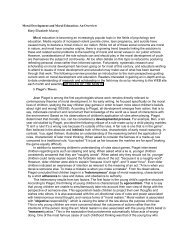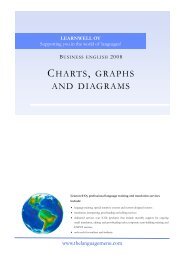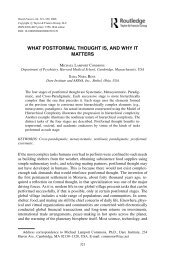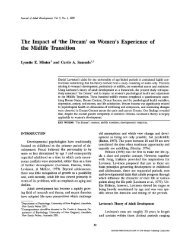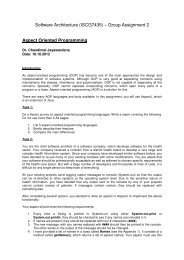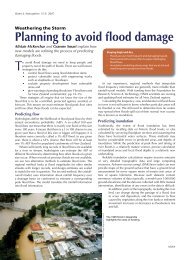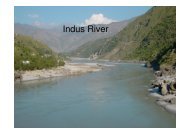Water and Waste water reticulation
Water and Waste water reticulation
Water and Waste water reticulation
You also want an ePaper? Increase the reach of your titles
YUMPU automatically turns print PDFs into web optimized ePapers that Google loves.
F412-1000.1<br />
Safe Work Method Statement<br />
Page: 1 of 5<br />
Date: 05/05/08<br />
Work Method Statement ( Part 1 ) Signed off :<br />
Contractor Shannon Civil Date : No :<br />
:<br />
Project : <strong>Water</strong> & <strong>Waste</strong> <strong>Water</strong> Reticulation, Construction & Earth Moving Works. Accepted : Yes No <br />
Job : Area :<br />
Typical Activities: Possible Hazards : Safety Controls :<br />
1. Locate existing<br />
Services<br />
<br />
<br />
<br />
<br />
Collision with vehicle, <br />
communication, traffic, <br />
noise<br />
<br />
Potential to damage exiting<br />
services<br />
<br />
Disruption to <strong>water</strong> supply<br />
Emissions from machinery<br />
<br />
<br />
<br />
<br />
<br />
<br />
<br />
<br />
<br />
<br />
<br />
<br />
Prepare traffic management plan. Supply observer to assist Machine Operator. Warning Signs.<br />
Consult authorities to identify required procedures for re-routing or temporarily taking offline services during works<br />
Utilise all reasonable techniques for the advance location of existing services in the vicinity of the proposal, such as<br />
advanced h<strong>and</strong> digging, location trough the use of metal detectors, ultrasound or otherwise<br />
Contact Dial Before You Dig by dialing 1100 (or www.dialbeforeyoudig.com.au) to obtain copies of records of<br />
services on the site. For a Sydney <strong>Water</strong> property obtain site plans / work as executed drawings from Property<br />
Services.<br />
Check at least 30M along the footpath in each direction <strong>and</strong> around nearby corners for indications of existing<br />
services.<br />
Carry out a service search by using pipe <strong>and</strong> cable location equipment.<br />
Obtain permission from the gas company if excavating near a gas main (Sydney <strong>Water</strong> staff contact through<br />
schedulers).<br />
Obtain permission from Energy Australia or Integral Energy if excavating near a High Voltage cable.<br />
Locate <strong>and</strong> mark underground services<br />
DIG BY HAND SHOVEL (use only dry wooden h<strong>and</strong>led or insulated tools) or non-destructive means to expose<br />
ALL underground services within the immediate vicinity of the job to be performed. Look for warning tape <strong>and</strong><br />
conduits. Don’t use mechanical excavators until you have located <strong>and</strong> identified all services.<br />
Have an appropriate fire extinguishing system available.<br />
Have a person acting as an observer when using a mechanical excavator within 1M of an underground electricity<br />
cable, optical fibre cable or gas main.<br />
Locate <strong>and</strong> keep clear of overhead service (where applicable)<br />
Instances where maintaining <strong>water</strong> supply is not possible, customers will be notified as per PH02 – Notification of<br />
Residents<br />
Machinery will not be left idling<br />
Machinery will have appropriate exhaust emission controls
F412-1000.1<br />
Safe Work Method Statement<br />
Page: 2 of 5<br />
Date: 05/05/08<br />
2. Prepare site to prevent<br />
accidents<br />
<br />
<br />
<br />
<br />
Inadequate access &<br />
egress<br />
Traffic – Vehicles, person<br />
watching, communication,<br />
traffic <strong>and</strong> machinery<br />
noise<br />
Spills of fuels to the<br />
environment<br />
Erosion of sediment<br />
<br />
<br />
<br />
<br />
<br />
<br />
<br />
<br />
Conduct brief site inspection<br />
Provide fencing, barricades, signals <strong>and</strong> danger flags as per regulations<br />
Supply personal protective equipment<br />
Fuels will be kept in a covered <strong>and</strong> bunded area in suitable containers<br />
No chemicals, fuels <strong>and</strong>/or waste will be stored or disposed in drainage lines or unsealed surfaces<br />
Bund volume will be 150% of chemicals stored<br />
A spill kit will be kept on site<br />
Sediment <strong>and</strong> Erosion control devices will be places around storm<strong>water</strong> drains, upslope of site to detour runoff<br />
around the site <strong>and</strong> down slope to prevent sediment-entering <strong>water</strong>ways.<br />
3. Prepare site to avoid<br />
environmental damage<br />
<br />
<br />
Excavation materials<br />
washed down in<br />
storm<strong>water</strong> drain<br />
Possible damage tree roots<br />
<strong>and</strong> subsequent damaging<br />
trees<br />
<br />
<br />
<br />
<br />
<br />
<br />
Bunding will be provided to stop materials washed down drainage.<br />
Liaise with Local authorities for specific environment issues where applicable (Local EPA, RTA <strong>and</strong> council etc)<br />
Fuels will be kept in a covered <strong>and</strong> bunded area in suitable containers<br />
No chemicals, fuels <strong>and</strong>/or waste will be stored or disposed in drainage lines or unsealed surfaces<br />
Bund volume will be 150% of chemicals stored<br />
A spill kit will be kept on site<br />
Spills of fuels to the<br />
environment<br />
Dust generated during<br />
excavation <strong>and</strong> work<br />
Emission from vehicles <strong>and</strong><br />
machinery<br />
Increase in noise<br />
Visual impacts on residents<br />
<strong>Waste</strong><br />
<br />
<br />
<br />
<br />
<br />
<br />
<br />
Sediment <strong>and</strong> Erosion control devices will be placed around storm<strong>water</strong> drains, upslope of site to detour runoff<br />
around the site <strong>and</strong> downslope to prevent sediment entering <strong>water</strong>ways<br />
Trees <strong>and</strong> vegetation will be barricaded/fenced to prevent damage<br />
Stockpiles <strong>and</strong> exposed areas on the site will be <strong>water</strong>ed or coved to prevent dust generation<br />
Keep work site will be kept tidy<br />
Equipment will have a silencer installed to reduce noise<br />
Noisy equipment will be used as specified work hours<br />
<strong>Waste</strong> will be disposed at the appropriate EPA approved facility <strong>and</strong> documentation kept<br />
4. Prepare access <strong>and</strong><br />
egress for machinery<br />
<br />
<br />
<br />
Collision with vehicle <strong>and</strong><br />
/ or pedestrians<br />
Damage to property<br />
Damage to trees <strong>and</strong><br />
vegetation<br />
<br />
<br />
<br />
<br />
<br />
<br />
A traffic management plan will be implemented<br />
Every care will be taken to avoid any property damage.<br />
Be advised if large Tree roots are unearthed <strong>and</strong> a Tree preservation order application lodged.<br />
Vegetated/sensitive areas will be fenced<br />
All damaged property will be repaired by the end of the days work or as soon as possible<br />
Signs advising of traffic changes/increased traffic will be displayed for both vehicles <strong>and</strong> pedestrians
F412-1000.1<br />
Safe Work Method Statement<br />
Page: 3 of 5<br />
Date: 05/05/08<br />
5. Excavation<br />
(Mechanical & Dig by<br />
h<strong>and</strong>)<br />
6. H<strong>and</strong>ling, Storage <strong>and</strong><br />
preservation of<br />
materials<br />
<br />
<br />
<br />
<br />
<br />
<br />
<br />
<br />
<br />
<br />
<br />
<br />
<br />
<br />
<br />
Personnel unclear to <br />
directions <strong>and</strong> actions<br />
Trench wall collapse <br />
Underground services <br />
Sloping/unstable ground <br />
Manual h<strong>and</strong>ling <br />
Disturbance <strong>and</strong> /or <br />
damage to existing <br />
services<br />
<br />
Possible fire hazards <br />
Contaminated soil, dust, <br />
falling into excavation <br />
Restricted access <br />
Damage to property <br />
<br />
Physical strain, injury <br />
from lifting<br />
<br />
Unsecured filling materials <br />
spread<br />
<br />
Kids trespass<br />
Spillage of materials<br />
Erosion of materials<br />
All personnel will be trained prior to the commencement of any excavation work; a work permit is required. Site<br />
Safety Rules will be implemented.<br />
Trenches 1.5m or more must be shored.<br />
Locate <strong>and</strong> mark underground services<br />
Locate <strong>and</strong> keep clear of overhead service<br />
Appropriate plant chosen for sloping/unstable ground.<br />
Use only dry wooden h<strong>and</strong>led or insulated tools for all DIG BY HAND SHOVEL activities.<br />
Observe Manual h<strong>and</strong>ling / lifting awareness codes.<br />
NO mechanical excavation is permitted within 500mm in any direction of any underground electrical cables.<br />
NO mechanical excavation within 500mm in any direction of a gas service.<br />
Have an appropriate fire extinguishing system available.<br />
Soil will be stockpiled for reuse later or for appropriate disposal<br />
Soil believed to be contaminated, will be kept separate from other soil, will be tested <strong>and</strong> disposed appropriately<br />
Dust suppression techniques such as <strong>water</strong>ing <strong>and</strong> covering will be used to reduce erosion <strong>and</strong> dust emissions<br />
Every care will be taken to avoid any property damage<br />
Manual H<strong>and</strong>ling training will be provided.<br />
Chemicals/fuels will be stored in a bunded area that complies with the Australian St<strong>and</strong>ard<br />
Stockpiles will be covered to prevent dust emission <strong>and</strong> soil erosion<br />
Sediment control devices will be placed around stockpiles
F412-1000.1<br />
Safe Work Method Statement<br />
Page: 4 of 5<br />
Date: 05/05/08<br />
7. Connection to Sydney<br />
<strong>Water</strong> & <strong>Waste</strong> <strong>Water</strong><br />
Mains<br />
8. Valve shut down &<br />
Restoring flow<br />
9. Back fill & Restoration<br />
of site<br />
<br />
<br />
<br />
<br />
<br />
<br />
<br />
<br />
<br />
<br />
<br />
<br />
<br />
<br />
<br />
<br />
<br />
<br />
<br />
<br />
Trench wall collapse<br />
Gas hazards<br />
Chemicals hazards<br />
Inappropriate equipment<br />
Pipe material (VCP, PVC,<br />
UPVC, PE, etc)<br />
Contact with unhygienic<br />
surfaces<br />
Spillage<br />
Hazardous fumes<br />
Spray electrical current<br />
Flooding<br />
<br />
<br />
<br />
<br />
<br />
<br />
<br />
<br />
<br />
<br />
<br />
<br />
Slips, trips, fall, on wet <br />
surfaces<br />
<br />
Flooding in upstream<br />
maintenance hole <br />
Unable to remove <br />
upstream plug<br />
<br />
Traffic fittings in roadway<br />
Pollution of <strong>water</strong>ways<br />
Moving equipment causing <br />
injury<br />
<br />
Inadequate compaction <br />
Construction refuse causing <br />
hazard to public <br />
Inadequate re-surfacing <br />
Erosion of soil<br />
Install adequate shoring in trenches<br />
Use of tripod <strong>and</strong> safety harness for safe access where appropriate.<br />
Hazardous Gas Check before access <strong>and</strong> continuous gas monitoring during connection by trained personnel<br />
Appropriate equipment <strong>and</strong> procedures used for cutting pipe.<br />
Appropriate PPE used<br />
Manual h<strong>and</strong>ling awareness.<br />
Two valve shut down etc.<br />
Sediment <strong>and</strong> Erosion control devices will be in place around storm<strong>water</strong> drains, upslope of site to detour runoff<br />
around the site <strong>and</strong> downslope to prevent sediment entering <strong>water</strong>ways<br />
Odours will be monitored <strong>and</strong> actioned as appropriate<br />
Sewage contaminated equipment <strong>and</strong> trucks removing contaminated items will be sealed in a <strong>water</strong> tight container<br />
or covered<br />
If maintaining <strong>water</strong> supply is not possible, customers will be notified as per PH02 – Notification of Residents<br />
Storm<strong>water</strong> drains will be protected from spillage by sediment control devices such as s<strong>and</strong>bags being placed<br />
around them<br />
<strong>Water</strong>proof clothing <strong>and</strong> rubber boots will be provided for personnel required to work in wet areas or conditions.<br />
Upstream maintenance hole to be pumped out <strong>and</strong> completely discharged to downstream maintenance hole or<br />
tanker.<br />
Plug removal method employed to avoid confined space entry where possible.<br />
Traffic control in place<br />
Sediment <strong>and</strong> Erosion control devices will be placed around storm<strong>water</strong> drains, upslope of site to detour runoff<br />
around the site <strong>and</strong> downslope to prevent sediment entering <strong>water</strong>ways<br />
Traffic control in place (Traffic control plan)<br />
All trenches will be back filled at the end of each shift<br />
Compaction shall be done <strong>and</strong> met Australian St<strong>and</strong>ards<br />
Site cleared of debris <strong>and</strong> refuse<br />
Re-surfacing to original condition or appropriate trafficable surfacing.<br />
Sediment <strong>and</strong> Erosion control devices will be placed around storm<strong>water</strong> drains, upslope of site to detour runoff<br />
around the site <strong>and</strong> downslope to prevent sediment entering <strong>water</strong>ways<br />
10. Vacate site Collision with vehicle <strong>and</strong> / <br />
or pedestrians<br />
Prepare traffic management plan. Supply observer to assist Machine Operator Warning Signs
F412-1000.1<br />
Safe Work Method Statement<br />
Page: 5 of 5<br />
Date: 05/05/08<br />
Work Method Statement ( Part 2 )<br />
Personal Qualification <strong>and</strong> Experience : Personnel, Duties <strong>and</strong> responsibilities: Training required to complete Work :<br />
Accreditation as a <strong>Water</strong>/<strong>Waste</strong> <strong>Water</strong> Constructor or key<br />
personnel<br />
Accreditations, approved by WorkCover <strong>and</strong>/or Sydney<br />
<strong>Water</strong> (SWC)<br />
<strong>Water</strong>/<strong>Waste</strong> <strong>Water</strong> Pipe laying,<br />
<strong>Water</strong>/<strong>Waste</strong> <strong>Water</strong> access chamber construction<br />
OHS&R Awareness (Green Card)<br />
Confined Spaces training<br />
Observing all relevant Acts <strong>and</strong> associated Legislation<br />
Site Safety<br />
Where applicable, nominated representative according to<br />
AS 2865 (Confined Spaces).<br />
Ensure safe work place<br />
Ensure PPE used<br />
Notify incidents <strong>and</strong> near misses<br />
Ensure MSDS sheets available on site if applicable.<br />
Site Induction<br />
Drainers Certificates of SWC training Courses<br />
Relevant plant operating licenses.<br />
AS 2865 accreditation (or SWC CI 800 or GP001)<br />
Basic CPR <strong>and</strong> First Aid<br />
Install Junction <strong>and</strong> Sidelines course.<br />
WorkCover accreditation for equipment use.<br />
Engineering Details / Certificates / WorkCover Approvals : Codes of Practice, Legislation :<br />
EPA Section 17D approval if required<br />
Council approval for aboveground storm<strong>water</strong><br />
All designs to comply with SWC/WorkCover requirements<br />
WorkCover approval to commence work.<br />
All designs to current Australian St<strong>and</strong>ards.<br />
SWC E-guide, SWC Supplements, relevant Australian St<strong>and</strong>ards<br />
Current Plumbing & Drainage Codes WorkCover Guidelines.<br />
SWC Minor Works (<strong>Waste</strong> <strong>Water</strong>) Manual<br />
EPA requirements <strong>and</strong> legislation<br />
OH&S Act, Regulations & Codes<br />
CI 800/GP 001/AS 2865<br />
Plant / Equipment : (Plant & equipment need to comply with WorkCover requirements)<br />
Excavator, Trucks, Power Tools<br />
Maintenance Checks : (According to WorkCover & Manufacturers requirements)<br />
Machine maintenance log<br />
Electrical Tools monthly inspection tests<br />
Read & Signed by all Employees on Site :


